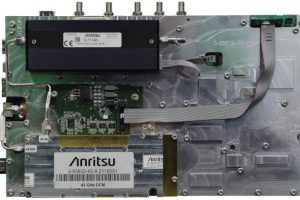
At issue are stray signals carried long distances into cells where they interfere with the TDD up-link.
The company explained:
For 5G networks with a coastal or mountainous terrain, RF down-link transmissions readily become subject to atmospheric tropospheric ducting. Signals can travel hundreds of kilometres, resulting in a time offset relative to the far-end base station. The result is down-link power masking the up-link signals from user equipment. It is also essential that there is a common frame slot format deployed on all operator networks in a country, and ideally at international borders. The new up-link interference measurement includes configurations for the common frame slot formats recommended by international standards organisations, including GSMA, ITU-R and ECC/CEPT.
Tester MS2090A (for FR1 and FR2 frequency bands) and MS2080A (FR1 only networks) can be modified to include the new test, via a software update, which provides a dual display of the LTE or 5G frame structure with automatic placement of gates on the up-link slots alongside the RF spectrum of the gated time slots.
 Electronics Weekly Electronics Design & Components Tech News
Electronics Weekly Electronics Design & Components Tech News



